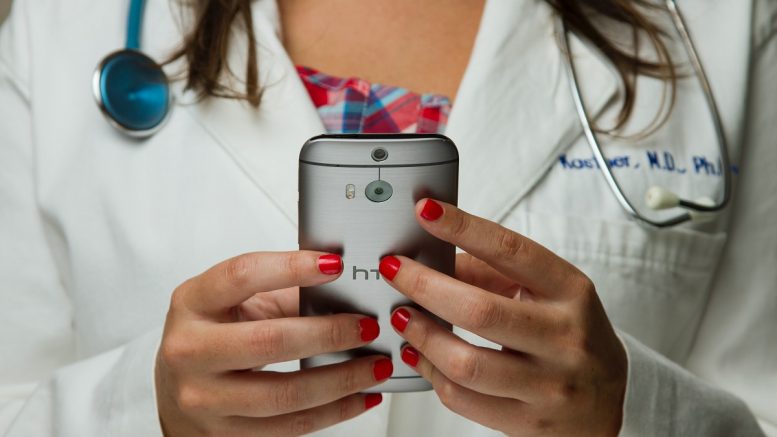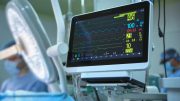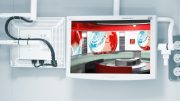In 2020, medical facilities faced very serious difficulties related to the covid-19 pandemic. Many hospitals were unprepared to handle such a large number of patients. Even dealing with such an issue as patient record-keeping in the hospital base caused incredible difficulties, all because many of the polyclinics did not have special software that would automate most processes and make patient record-keeping much easier and more convenient. Healthcare development service has become a solution to many problems.
Software in Medicine: Important Benefits
Despite the fact that the idea of replacing human labour with robots seems like something fantastic, few would argue that assigning the most labour-intensive and monotonous tasks to machines is a rational solution. After all, what is the point of performing various calculations independently if the operating systems and specialized equipment can handle this task 1000, and often even 1000000 times faster!
Unfortunately, many companies have not yet realized the importance of automating work processes. They do not spend money to buy modern operating systems and do not order their development from specialized companies. While in the case of companies in various fields it is a question of loss of competitiveness and financial losses, as well as loss of time, in the case of healthcare companies, the price to pay for not keeping up with the times is often measured in human lives!
So how can operating systems help healthcare companies? Here are just some of the benefits they provide:
- Fast collection and storage of data. These systems are capable of handling millions of terabytes of data and storing it on their servers. With these systems, medical facility personnel have no problem recording and storing patient information.
- Increased quality of customer service. The use of state-of-the-art technology, on which enterprise operating systems in the healthcare industry are based, makes it possible to serve clients more quickly, doing so with quality and in a very simple manner. This advantage increases customer loyalty and enables companies to serve many more customers throughout the workday.
- The highest level of security. Is it worth mentioning what incredible damage can cause 1 hacker attack on a health care enterprise? Financial losses can run into the millions of dollars, not to mention the distrust on the part of clients, in the event that information about them becomes publicly available. So maybe it’s much more rational to invest in operating systems and the latest equipment that provides the highest level of security and complete protection from any hacker attacks?
- Constant communication with customers. Different operating systems make it possible to serve customers even after hours. For example, a mobile app from the company will provide clients with help in finding answers to various health-related questions, and a chat-bot will help clients of medical companies 24 hours a day. All of this will help create the image of a company that cares about its clients both day and night, and, of course, will increase people’s desire to contact this firm again.
- Simpler and faster transactions. Modern operating systems allow patients to be billed quickly in real-time, and patients themselves are given the opportunity to pay these bills online any way they want, quickly and with minimal fees. This improves the quality of service and convenience, and the transactions themselves are fast enough.
- Simplification of diagnosis and increased probability of correct diagnoses. Modern medical equipment makes it possible to quickly calculate and monitor vital signs, so doctors can more quickly make the right diagnosis and prescribe treatment. In addition, many of these systems include medication alerts and reminders.
Major Trends in Medical Technology
Speaking of modern operating systems and equipment, it is impossible not to mention the main trends in this industry.
- Telemedicine. According to a study by Merritt Hawkins, the average time to see a patient at a family medicine doctor is 24 days. This study was done before the pandemic, and it’s not hard to guess that today that time has doubled for non-urgent cases. The introduction of telemedicine services has significantly reduced this time and allowed even more patients to access care. In addition, telemedicine has made it possible to significantly improve the quality of medical care and reduce the number of non-urgent visits, which is very important, especially during a pandemic. The efficiency of today’s clinics has also increased.
- Remote monitoring and telemetry. Remote monitoring devices proved their effectiveness during the coronavirus outbreak. This trend has made it possible to provide rapid care for patients who are admitted to hospitals diagnosed with covid-19, and physicians have the ability to make quick and correct decisions. It has also reduced the need for patients to visit clinics, who have been able to stay home under observation and not put themselves at high risk of infection.
- The internet of things. The Internet of Things has been talked about by many, and recently this trend has gained popularity in medicine. First of all, it is associated with the wearing by more and more people of special devices that can very quickly and in just a few seconds provide data on basic medical indicators, such as skin temperature, blood pressure, glucose levels, and so on. Experts predict that already in 2025, the market for the Internet of Medical Things will exceed $534 billion.
- Virtual and augmented reality. If just a few years ago virtual reality seemed distant to some people, many clinics are already using augmented and virtual reality technologies for comprehensive patient care, effective diagnosis, and consultation. According to the most conservative estimates, by 2026 the AR/VR healthcare market will exceed $7 billion. First and foremost, this growth will be driven by the high demand for innovative solutions related to patient care, preparation for complex surgeries, and advanced diagnostic methods. This technology uses displays, simulators, and sensors to improve the level of communication between the doctor and patients. In addition, it is also used in medical universities and helps to streamline the learning process.
- Machine Learning and Artificial Intelligence. Innovative solutions based on artificial intelligence have contributed to a significant reduction in the cost of medical centers, as well as a reduction in the number of medical errors. By 2025, the global market for artificial intelligence will reach $36 billion.
Already today, artificial intelligence is being used in areas such as virtual physician assistance, robotic surgery, disease diagnosis, fraud detection, reducing the number of medical errors, optimizing administrative workflows, etc.
Conclusions
Healthcare development service is very much in demand, and there is no doubt that the creation of healthcare operating systems will only increase in the future. Popular trends, such as artificial intelligence, virtual and augmented reality, the Internet of Things, remote monitoring, and telemedicine contribute to this.
Thanks to the introduction of modern operating systems, it is possible not only to optimize work processes in healthcare enterprises but also to reduce the number of medical errors, as well as significantly reduce costs. To remain competitive and improve the quality of customer service, all companies should think about implementing such systems in their work.





